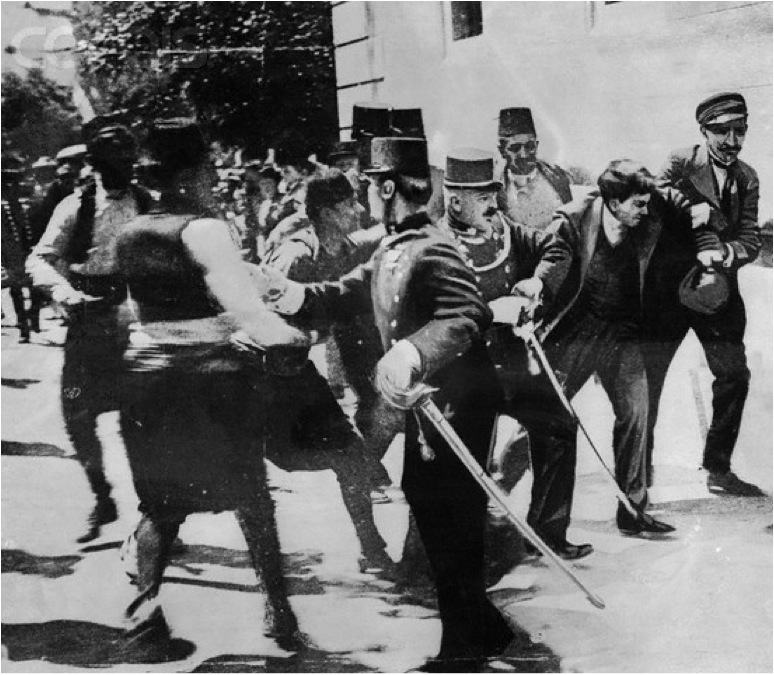(W)Archives: End of the World as We Know It…And Franz Feels Fine

During the brutal war in Bosnia during the 1990s, a war which drew military intervention from across the globe, a grim joke circulated in the Bosnian capital, Sarajevo: only the odd-numbered world wars start here.
That joke referred to an event that happened 100 years ago tomorrow. On June 28, 1914 the heir to the throne of the Austro-Hungarian Empire, Archduke Franz Ferdinand visited Sarajevo in Bosnia-Herzegovina. This was a dangerous visit. Bosnia-Herzegovina had only been clawed away from the Ottoman Empire in 1908 and the small state of Serbia was annoyed that it had not acquired the territory instead. In Sarajevo that day were a number of violent Serbian nationalists.
Of course, Franz Ferdinand did not survive the day. The Imperial War Museum in London has a short Hungarian newsreel which shows us some of the last moments of his life. Starting at 00:58 in the film, the Archduke’s car drives up to the Sarajevo town hall and he gets out with his wife Sophie. Seemingly there is nothing unusual about the scene. In fact, however, A Serb had thrown a grenade at the car, but it had bounced off the car and rolled away. In the twentieth century, such an attack would have caused security people to change the schedule and whisk the Archduke away to safety. But not in this more trusting era. Instead, the Archduke continued serenely on. The film shows him making a few remarks to the officials who were there to greet him and then proceeding into the building. He will be shot and killed by another Serbian national, Gavrilo Princip, on his drive away from the Town Hall not long after.
The immediately visible results of the assassination can be seen in the first minute of the newsreel: anti-Serb rioting in Sarajevo. But behind the scenes, Europe started unravelling. On 28 July Austria-Hungary invaded Serbia and a few days later Germany invaded France. The worst war in the history of the world had started. It laid the groundwork for a second even worse war which in turn laid the groundwork for a nuclear apocalypse that fortunately never happened.
In short, the events of that day ended the Long Nineteenth Century which began at Waterloo and launched the Short Twentieth Century which came to earth in Moscow in 1991 with the final lowering of the Soviet flag.
June 28, 1914 truly was the end of the world as they knew it.
Mark Stout is a Senior Editor at War on the Rocks. He is the Director of the MA Program in Global Security Studies at Johns Hopkins University’s School of Arts and Sciences in Washington, D.C.
Photo credit: paukrus

